Gian Guido Gentili
Conformal Metasurfaces for Recovering Dynamic Blockage in Vehicular Systems
Aug 14, 2022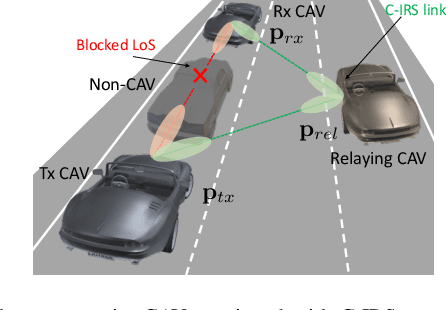
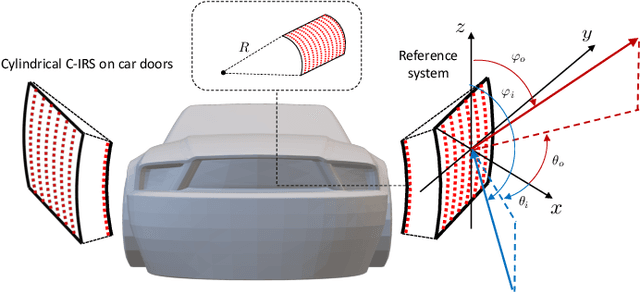
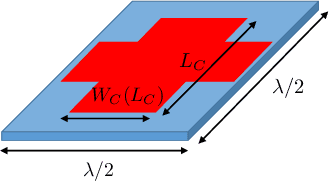
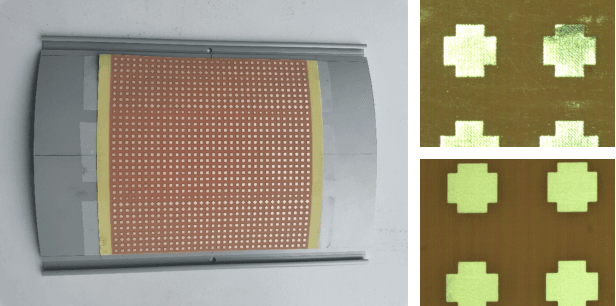
Abstract:Intelligent reflecting surfaces (IRS) will represent a key technology in the upcoming sixth-generation (6G) communication networks to extend the network coverage and overcome link blockage. Research on IRS is expected to take a giant leap in the coming years to address the current technological limitations, mainly regarding the IRS re-configuration in highly dynamic scenarios, such as vehicle-to-vehicle (V2V) ones. This paper proposes a fully passive and low-cost solution based on pre-configured IRS to be lodged on the vehicle's body, which does not require any signaling for re-configuration. However, conventional IRS are planar array and cannot fit with most vehicles' silhouettes. Hence, the proposed design targets conformal surfaces (C-IRS) with an arbitrary shape. In particular, this paper reveals the first experimental findings on the realization of C-IRS operating at 26 GHz and measurements in anechoic chamber, which validate the analytical derivations. To demonstrate the benefits of the proposed solution, numerical simulations in a V2V scenario show that, when the percentage of vehicles equipping a C-IRS increases, the communication becomes more robust to vehicles' blockage and the average end-to-end SNR is enhanced up to 25 dB.
Conformal Metasurfaces: a Novel Solution for Vehicular Communications
Jan 21, 2022



Abstract:In future 6G millimeter wave (mmWave)/sub-THz vehicle-to-everything (V2X) communication systems, vehicles are expected to be equipped with massive antenna arrays to realize beam-based links capable of compensating for the severe path loss. However, vehicle-to-vehicle (V2V) direct links are prone to be blocked by surrounding vehicles. Emerging metasurface technologies enable the control of the electromagnetic wave reflection towards the desired direction, enriching the channel scattering to boost communication performance. Reconfigurable intelligent surfaces (RIS), and mostly the pre-configured counterpart intelligent reflecting surfaces (IRS), are a promising low-cost relaying system for 6G. This paper proposes using conformal metasurfaces (either C-RIS or C-IRS) deployed on vehicles' body to mitigate the blockage impact in a highway multi-lane scenario. In particular, conformal metasurfaces create artificial reflections to mitigate blockage by compensating for the non-flat shape of the vehicle's body, such as the lateral doors, with proper phase patterns. We analytically derive the phase pattern to apply to a cylindrical C-RIS/C-IRS approximating the shape of the car body, as a function of both incidence and reflection angles, considering cylindrical RIS/IRS as a generalization of conventional planar ones. We propose a novel design for optimally pre-configured C-IRS to mimic the behavior of an EM flat surface on car doors, proving the benefits of C-RIS and C-IRS in a multi-lane V2V highway scenario. The results show a consistent reduction of blockage probability when exploiting C-RIS/C-IRS, 20% for pre-configured C-IRS, and 70% for C-RIS, as well as a remarkable improvement in terms of average signal-to-noise ratio, respectively 10-20 dB for C-IRS and 30-40 dB for C-RIS.
Electromagnetic Models for Passive Detection and Localization of Multiple Bodies
Apr 15, 2021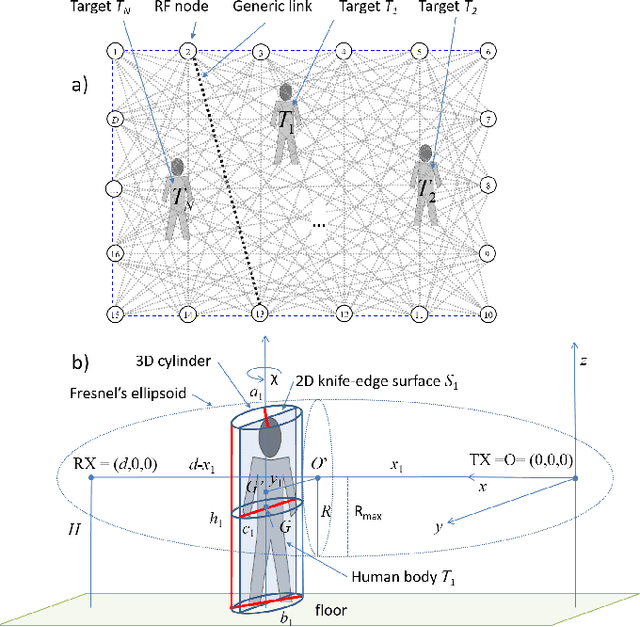
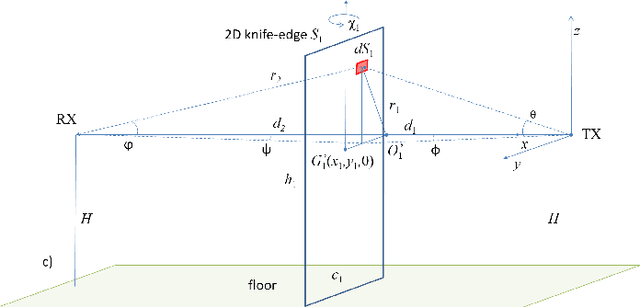


Abstract:The paper proposes a multi-body electromagnetic (EM) model for the quantitative evaluation of the influence of multiple human bodies in the surroundings of a radio link. Modeling of human-induced fading is the key element for the development of real-time Device-Free (or passive) Localization (DFL) and body occupancy tracking systems based on the processing of the Received Signal Strength (RSS) data recorded by radio-frequency devices. The proposed physical-statistical model, is able to relate the RSS measurements to the position, size, orientation, and random movements of people located in the link area. This novel EM model is thus instrumental for crowd sensing, occupancy estimation and people counting applications for indoor and outdoor scenarios. The paper presents the complete framework for the generic N-body scenario where the proposed EM model is based on the knife-edge approach that is generalized here for multiple targets. The EM-equivalent size of each target is then optimized to reproduce the body-induced alterations of the free space radio propagation. The predicted results are then compared against the full EM simulations obtained with a commercially available simulator. Finally, experiments are carried out to confirm the validity the proposed model using IEEE 802.15.4-compliant industrial radio devices.
 Add to Chrome
Add to Chrome Add to Firefox
Add to Firefox Add to Edge
Add to Edge